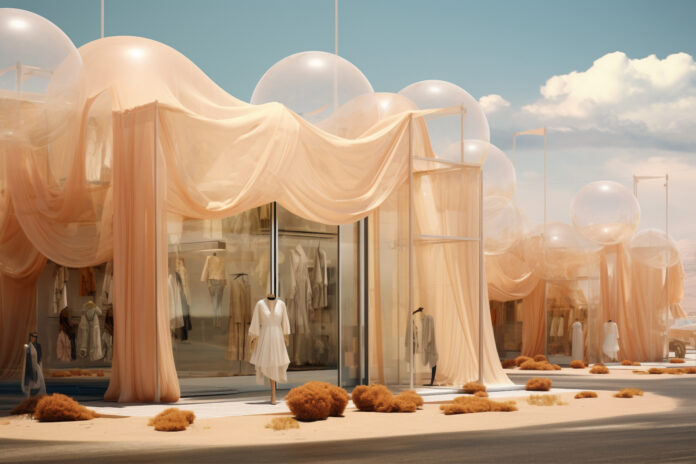With its unique features of durability, weather resistance, and aesthetic flexibility, Markiseteppe has become a cornerstone in modern outdoor design. Markisetep is best known as the primary fabric used in awnings, canopies, and shading systems, but its applications and significance goes far beyond simple coverage. In both private and commercial spaces, markiseteppe serves as a fabric that solves the paradox of comfort creation, outdoor usability extension, and energy-efficient living supporting.
The Markiseteppe Story
People have always faced the need to protect themselves from the elements, be it sails that caught wind on ships or woven coverings used to provide shade in ancient markets. This need for protection has been present for centuries. With time, simple organic fibers in fabrics evolved to advanced textiles that can withstand environmental pressures.
Markisetep is a perfect example of such fabric. Designed for specific functions, it claims the ability to withstand exposure to the sun’s UV rays, moisture, and mechanical stresses. Markisetep is like modern textiles in the way that its fibers are engineered to provide outdoor durability, unlike old cotton fabrics and textiles that were left untreated. This ability to withstand the outdoor elements while looking good fulfills the modern need of many societies that prioritize both functionality and design.
Why Markiseteppe Distinguishes Itself Among Outdoor Fabrics
Of all outdoor fabrics available on the market, few rival the markiseteppe in its balance of functionality and style. Markiseteppe’s balance is its performance and aesthetic integration.
In terms of functionality, the construction of the markiseteppe covers also aids in resisting fading, tearing, and the growth of mold. These are critical, especially in outdoor applications, where materials face the sun, rain, wind, and temperature fluctuations. While ordinary fabrics would fail after a season, markiseteppe will retain its structural integrity for years.
Just as noteworthy is markiseteppe’s aesthetic adaptability. Its available variety in patterns and colors enables architects and homeowners to integrate shading solutions with other design elements. From modern architecture’s sleek minimalist tones to warm hues characteristic of traditional homes feels and looks inviting, and the fabric does not compromise markiseteppe’s durability as well.
Markiseteppe in Residential Spaces
As families embrace the comforts of gardens, patios, and balconies, there is a desire to utilize these spaces year-round, and with seamless access. Markiseteppe is a critical enabler for this shift.
Awnings constructed with this material create shaded areas that keep direct heat exposure to a minimum, thus facilitating relaxation and dining even in mid-summer. Beyond comfort, shading reduces the home’s interior temperature by preventing solar radiation from entering through the windows. This minimizes energy expenditure on cooling systems, which is a significant advantage from the perspective of sustainable living.
Another advantage concerns the protection of interior furnishings. UV exposed carpets, wooden floors, and even upholstered furniture easily lose their vibrant color. Markiseteppe works to protect these furnishings by blocking sunlight, thereby serving as a protective barrier that enhances these furnishings’ longevity.
Commercial Uses of Markiseteppe
The ability to create comfortable outdoor areas is a competitive advantage for most businesses, particularly those in the hospitality industry. Restaurants and cafes often extend their seating areas with awnings or canopies so guests can dine comfortably regardless of outdoor conditions. Shading systems are also relied on by hotels and resorts for practical purposes, as well as part of their architectural identity.
Retail businesses also utilize markiseteppe. An important part of every shopfront is the awning as it serves the business with dual purpose of protecting the entrance and featuring appealing design that attracts customers. Moreover, when used with brand elements, the fabric serves as promotional material in addition to being functional.
More significant undertakings like sports arenas, cultural venues, and open-air markets have more extensive shading systems. Markiseteppe makes sure that these areas are still operational and require minimal upkeep. Markiseteppe’s advantages in enduring heavy use and environmental stress turns it into an investment instead of an ongoing expense.
“Innovation and Sustainability in Markiseteppe”
Modern textiles are characterized by the need for sustainable solutions. The traditional ways of creating goods extremely consumed harmful energy, and used non-recyclable materials. In comparison, many markiseteppe innovations focus on green production and post-life recyclability.
Some adaptions use plastic fibers, decreasing the need for non-recyclable virgin materials. Others use non-toxic coatings, making the product safe for the environment. Markiseteppe evolution proves that sustainability in design is now mandatory.
Further enhancing the functionality of the product is the smart Self-cleaning coatings that repel dirt and dust using nanotechnology, washing the product less. Enhanced UV resistance also prolongs color degradation, ensuring a more appealing appearance for the product over time. All of these efforts are directed towards the functionality of the item, the global aim of decreased waste, and energy consumption.
Comfort, Health, and Energy Efficiency
Markiseteppe goes far beyond aesthetics and durability; confort, health, and energy efficiency are some other important benefits pertaining to well-being. The protective fabrics shield people from harmful ultraviolet rays, guarding individuals from direct sunlight, while permitting ambient sunlight to filter through. This is particularly advantageous for outdoor dining and recreational areas.
Shedding several other important benefits, markiseteppe helps to control and moderate the solar heat entering the building. This reduction in the need for mechanical cooling not only saves on energy costs, but also reduces carbon footprints, making it an ally in global climate action efforts. Moreover, mechanical cooling is an ally in global climate action efforts. Shading systems, in combination with energy-efficient windows and insulation, sharpen holistic building performance.
Global Adaptation of Markiseteppe
Markiseteppe is known for varying in global application, but the principles of outdoor fabrics remain unified.
Shading fabrics are a necessity for daily comfort in regions like the Mediterranean, which experiences extreme thermal comfort. Markiseteppe is frequently incorporated into retractable canopies, which are used to shade entire courtyards and terraces.
Concerns in northern areas include rain and wind, which increases the need for waterproofing and tear resistance. In Scandinavia, for example, markiseteppe is used to create sleek outdoor spaces designed to endure harsh weather, complementing the region’s minimalist architectural traditions and stave off weather.
In tropical regions, it is essential to have protection against mold and mildew. Markiseteppe’s protective coatings help to preserve the fabric even in wet and humid conditions. This adaptability illustrates its usefulness worldwide, even in the midst of highly diverse environmental conditions.
Future Role of Markiseteppe in Urban Design
Looking forward, it has been forecasted that markiseteppe will have greater influence on the way outdoor and semi-outdoor spaces will be designed in the cities. Due to the worsening impacts of climate change, urban planners are now considering shading as a prominent means of ensuring livability. Canopies and protective shelters made of weather-resistant fabrics are now common in public squares, parks, and transport hubs.
In smart cities, automated weather responsive shading systems are on the rise. Markiseteppe is well suited to these innovations, as it provides the required durability for motorized retractable roofs and responsive shading technologies. Additionally, architects are toying with the idea of fabric structures that also function as solar panels, providing energy while offering protection, an innovative concept whereby markiseteppe could take a leading role.
Markiseteppe is far from an ordinary fabric. It represents a durable, versatile, and innovative solution that modern society is in dire need of, especially considering the need for comfort, sustainability, and resilience. It enables the energy efficient maintenance of private homes and large commercial projects, while offering greater energy savings, providing outdoor living spaces.
Conclusion: The Enduring Value of Markiseteppe
Its evolution indicates an alignment with architectural and design trends that require bridging aesthetics with functionality, tradition with modern technology, and sustainability with design. markiseteppe, whether covering a busy public square or shading a small balcony, remains a reliable solution that meets a variety of needs.
As markiseteppe fabrics confront environmental challenges and as cities continue to expand, these fabrics will undoubtedly continue to be a fundamental element of contemporary outdoor solutions. markiseteppe is more than a mere textile; this durable yet stylish, practical yet innovative fabric is a framework for how materials can enhance more sustainable, healthier, and more enjoyable living environments.

